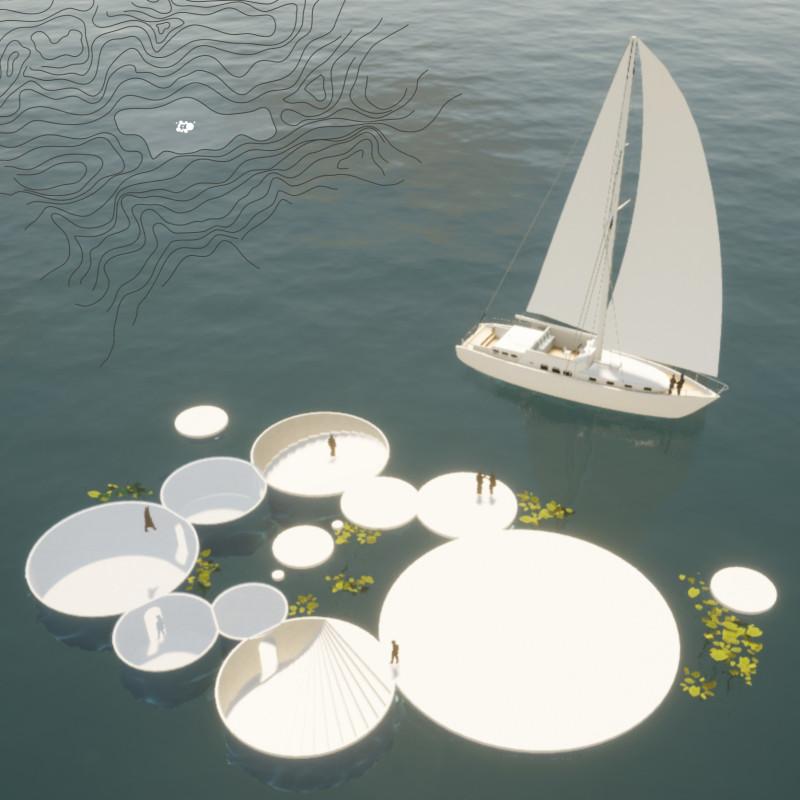5 key facts about this project
The unique approach to the project's layout is evident in its circular forms, which promote fluid movement and interaction among users. These platforms allow for diverse uses, including gatherings, relaxation, and recreational activities, thereby catering to a wide range of community needs. The overall design concept emphasizes harmony with the environment, as the architecture seamlessly integrates into the landscape while maintaining minimal ecological impact.
Key elements of the project include the choice of materials and structural integrity. Reinforced concrete forms the foundation of the floating platforms, providing the necessary durability to withstand water conditions. Glass elements are strategically placed to maximize natural light and offer expansive views of the surroundings, enhancing the user experience by creating a sense of openness and connection with the environment. Sustainable wood is incorporated in various aspects of the design, adding warmth and visual interest while also reflecting eco-friendly practices.
Aluminum is utilized for structural supports and railing systems, chosen for its lightweight and corrosion-resistant properties. The landscaping elements include native aquatic plants that not only enhance the aesthetic appeal but also contribute to the environmental sustainability of the project. These plants function as natural filtration systems, promoting biodiversity and improving the overall health of the water ecosystem.
The architectural design encourages interactions that deepen the connection between users and their surroundings. The circular platforms facilitate movement and exploration, inviting visitors to traverse the space freely. Each area is designed to accommodate different user groups without compromising individuality, creating a tapestry of experiences tied together by the water environment.
A notable aspect of this project is its emphasis on sustainability. Integrating features such as rainwater harvesting and solar panels into the design demonstrates a commitment to reducing environmental impact while promoting energy efficiency. This forward-thinking approach to architecture embodies a holistic view of environmental stewardship, making it relevant in today’s context where sustainability is paramount.
Through its thoughtful design and carefully chosen elements, the project sets itself apart as an exemplar of modern architectural practices focused on user experience and ecological responsibility. The unique interplay of materials and forms creates a cohesive design that is not only functional but also resonates with its natural setting, offering a place for respite and recreation.
For those interested in the intricate details of architectural plans, architectural sections, and architectural designs, a deeper exploration of this project is encouraged. Understanding the architectural ideas at play will provide valuable insights into how this design successfully marries aesthetics with practicality in a unique floating environment. The elegant integration of nature and architecture presents an opportunity for reflection and engagement within a community-centric space, which merits further examination.























